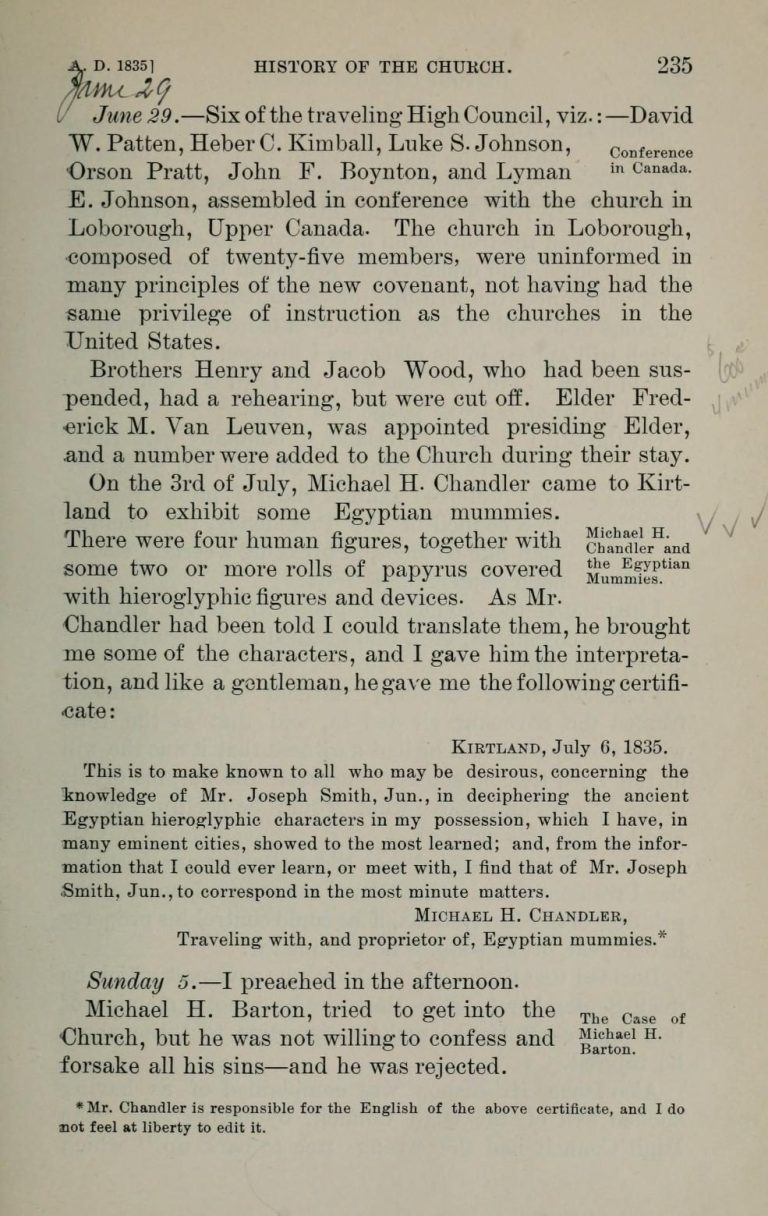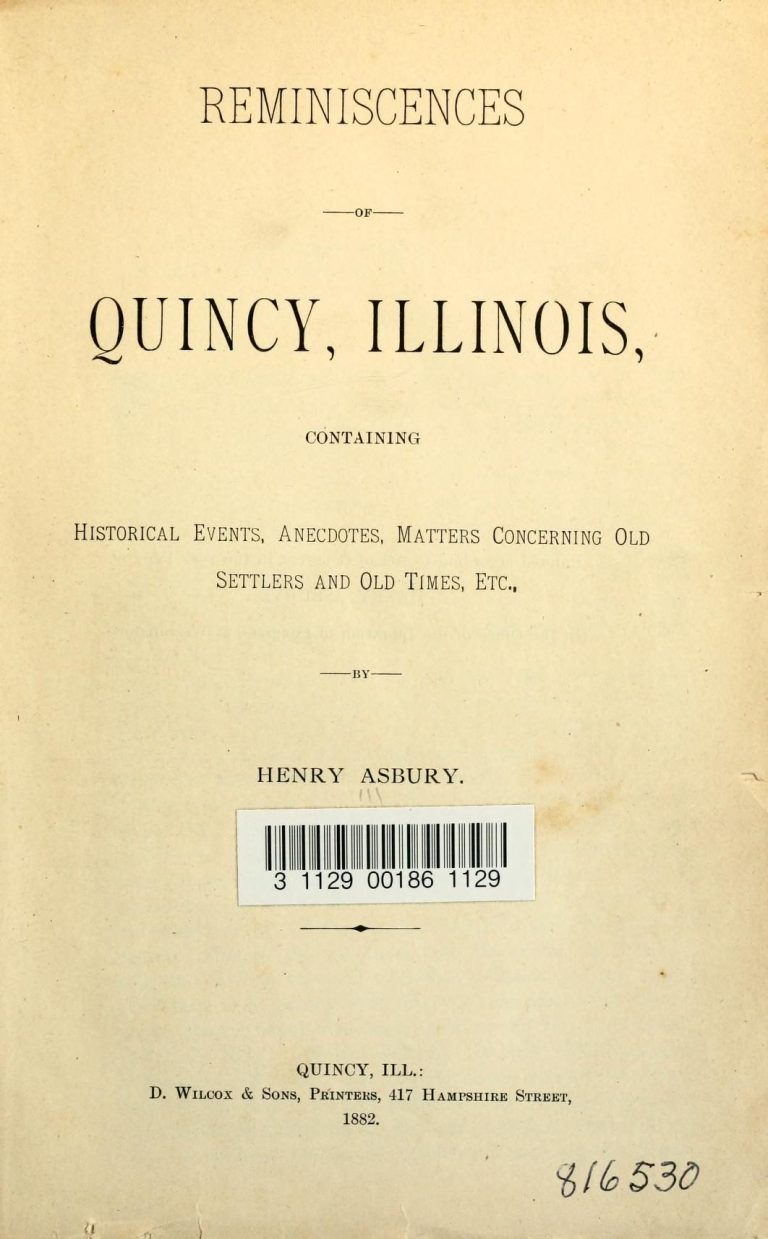
Who We Are
Highly qualified and motivated professionals
Our family-run business company has a long tradition in the industry. It was founded in 1982 by Joey Lord, who passed the business onto his son, Roberto, in 2005. We pride ourselves on providing outstanding customer service to order to guarantee that all of our clients are 100% satisfied.

Obtaining mummies & scrolls
History of the Church
Volume 2, pg, 235
On the 3rd of July, Michael H. Chandler came to Kirtland to exhibit some Egyptian mummies. There were four human figures, together with some two or more rolls of papyrus covered with hieroglyphic figures and devices. As Mr. Chandler had been told I could translate them, he brought me some of the characters, and I gave him the interpretation, and like a gentlemen, he gave me the following certificate:
Kirtland, July 6, 1835
This is to make known to all who may be desirous, concerning the knowledge of Mr, Joseph Smith, Jun., in deciphering the ancient Egyptian hieroglyphic characters in my possession, which I have, in many eminent cities, showed to the most learned; and, from the information that I could ever learn, or meet with, I find that of Mr, Joseph .Smith, Jun,, to correspond in the most minute matters.
Michael H, Chandler,
Traveling with, and proprietor of, Egyptian mummies.
Oliver puts down rumors
Messenger and Advocate
3 December 1835
The public mind has been excited, of late, by reports which have been circulated concerning certain Egyptian Mummies, and a quantity of ancient records, which were purchased by certain gentlemen in this place, last summer.
It has been said, that the purchasers of these antiquities pretend they have the body of Abraham, Abimelech, the king of the Philistines, Joseph, who was sold into Egypt, &c. &c. for the purpose of attracting the attention of the multitude, and gulling the unwary --which is utterly false.
For the purpose of correcting these, and other erroneous statements, concerning both the mummies and also the records, we give an extract of a letter written by a friend in this place, who possesses correct knowledge concerning this matter, to a gentleman who resides at a distance.
Who these ancient inhabitants of Egypt are, we do not pretend to say, --neither does it matter to us. We have no idea or expectation, that either of them are Abraham, Abimelech, or Joseph. Abraham was buried on his own possession, "in the cave of Machpelah, in the field of Ephron, the son of Zohar the Hittite, which is before Mamre," which he purchased of the sons of Heth; Abimelech lived in the same country, and for aught we know, died there, and the children of Israel carried Joseph's bones from Egypt when they went out under Moses. Consequently, could not have been found in Egypt in the 19th century. But the records are the most important, concerning which, we refer our readers to the extract for information.
Kirtland, Geauga Co. O.,
December 22, 1835

Upon the subject of the Egyptian records, or rather the writings of Abraham and Joseph, I may say a few words. This record is beautifully written on papyrus with black, and a small part, red ink or paint, and a small part, red ink or paint, in perfect preservation. The characters are such as you find upon the coffins of mummies, hieroglyphics, &c. with many characters or letters exactly like the present, (though probably not quite so square,) from the Hebrew without points.
These records were obtained from one of the catacombs in Egypt, near the place where once stood the renowned city of Thebes, by the celebrated French traveller Antonio Lebolo, in the year 1831. ...
When Mr. Chandler discovered that there was something with the Mummies, he supposed, or hoped it might be some diamonds or other valuable metal, and was no little chagrined when he saw his disappointment. He was immediately told, while yet in the Custom House, that there was no man in that city, who could translate his roll; but was referred by the same gentleman, (a stranger,) to Mr. Joseph Smith, jr. who, continued he, possesses some kind of power or gifts by which he had previously translated similar characters.
Though the mummies themselves are a curiosity, and an astonishment, well calculated to arouse the mind to a reflection of past ages, when men strove, as at this day, to immortalize their names, though in another manner, yet I do not consider them of much value compared with those records which were deposited with them.
If Providence permits, I will, ere long, write you again upon the propriety of looking for additions to our present scriptures, according to their own literal reading.
Believe me to be, sir, sincerely and truly, your brother in the bonds of the new and everlasting covenant.
Oliver Cowdery
To Wm. Frye, Esq. Gilead, Calhoon co. Ill.

History, 1838–1856
Volume B-1
In the manuscript history of the church, Joseph has the words of Oliver Cowdery written down by Richards and Bullock.
December 31
Mummies.
of Kirtland last July. It has been said that the purchasers of these antiquities pretend they have the body of Abraham, Abimelech, The kingof the Philistines. Joseph who was sold into Egypt, &c, &c, for the purpose of attracting the attention of the multitude, and gulling theunwarry; which is utterly false. Who these ancient inhabitants ofEgypts were I do not, at present, say. Abraham was buried on hisown possession “in the cave of Machpelah, in the field of Ephron,the Son of Zohar the Hittite, which is before Mamre,” which he purchased of the sons of Heth; Abimelech lived in the same countryand for ought we know died there; and the children of Israelcarried Joseph’s bones from Egypt, when they went out underMoses. Consequently could not have been found in Egypt in the
<Egyptian Records.>
nineteenth century. The record of Abraham and Joseph, foundwith the Mummies, is beautifully written on papyrus with black,and a small part, red ink or paint, in perfect preservation. Thecharacters are such as you find upon the coffins of Mummies;hieroglyphics, &c. with many characters or letters like the present(though probably not quite so square,) form of the Hebrew withoutpoints. “These records were obtained from one of the Catacombs, or inEgypt, near the place where once stood the renowned city of Thebes,by the celebrated French traveller Antonio Lebolo. in the year1831. He procured license from Mehemet Ali, then Viceroy ofEgypt, under the protection of Chevalier Drovetti, the Frenchconsul, in the 1828; employed 433 men, four months andtwo days, (if I understood correctly,) Egyptian or Turkish soldiers, atfrom four to 6 cents per Diem, each man: entered the catacomb June 7th 1831. and obtained eleven mummies. Therewere several hun[HC 2:348]dred mummies in the same catacomb; aboutone hundred embalmed after the first order, and depositedand placed in niches; and two or three hundred after the second and third order; and laid upon the floor or bottom of thegrand cavity; The two last orders of Embalmed were so decayedthat they could not be removed, and only eleven of the firstfound in the niches. On his way from Alexandria to Paris heput in at Trieste, and after ten days illness expired. Thiswas in the year 1832. Previous to his decease, he made awill of the whole to Mr Michael H. Chandler, (then in Philadelphia. Pa, <Pennsylvania.>) his nephew, whom he supposed to have beenin Ireland. Accordingly the whole were sent to Dublin, andMr Chandler’s friends ordered them to New York, where theywere received at the Custom house in the winter or Springof 1833. In April of the same year, Mr Chandler paid theduties, and took possession of his mummies. Up to thistime, they had not been taken out of the coffins nor thecoffins opened. On opening the coffins he discovered thatin connection with two of the bodies, were something rolledup with the same kind of linen, saturated with the same bitumen, which when examined, proved to be two rolls of papyrus
[History, 1838–1856, volume B-1 [1 September 1834–2 November 1838]]
Pharaoh and a daughter
Quincy Whig October 17, 1840
"A Glance at the Mormons"
After he had shown us the fine grounds around his dwelling; he conducted us, at our request, to an upper room, where he drew aside the curtains of a case, and showed us several Egyptian Mummies, which we were told that the church had purchased, at his suggestion, some time before, for a large sum of money.
The embalmed body that stands near the center of the case, said he, is one of the Pharaohs, who sat on the throne of Egypt, and the female figure by it was probably one of the daughters.
It may have been the Princess Thermutis, I replied, "the same that rescued Moses from the waters of the Nile.
It is not improbable, answered the Prophet, but time has not yet allowed fully to examine and decide that point. Do you understand the Hebrew language, said he, raising his hand to the top of the case, and taking down a small Hebrew grammar of Rabbi Seixas.

That language has not altogether escaped my attention, was the reply.
He then walked to a secretary, on the opposite side of the room, and drew out several frames, covered with glass, under which were numerous fragments of Egyptian papyrus, on which, as usual, a great variety of hieroglyphical characters had been imprinted.
These ancient records, said he, throw great light on the subject of Christianity. They have been unrolled and preserved with great labor and care. My time has been hitherto too much taken up to translate the whole of them, but I will show you how I interpret certain parts. There, said he, pointing to a particular character, that is the signature of the patriarch Abraham.
It is indeed a most interesting autograph, I replied, and doubtless the only one extant. What an ornament it would be to have these ancient manuscripts handsomely set, in appropriate frames, and hung up around the walls of the temple which you are about to erect at this place.
Yes, replied the Prophet, and the translation hung up with them.
[The Quincy Whig, "A Glance At The Mormons" 17 October 1840]
One of the Pharaohs
1882
"Old Daddy Smith and his aged wife, Joe Smith's father and mother, rented the house, or a part of it, situated on the northeast corner of Sixth and Hampshire streets, and set up a sort of museum of curiosities, consisting mainly of several mummies from Egypt. The old lady charged ten cents admittance and acted as exhibitor, explaining who and what each object really was. I am now unable to accurately give even the substance of these explanations by the old lady, but in substance they amounted to an assertion that one or more of the mummies was one of the Pharoahs or kings of Egypt, and there belonged to him some hieroglyphics or writings upon papyrus, which she said in some way proved the truth of Mormonism or something tending in that direction. The show did not seem to pay and did not run long here. However uncanonical and doubtful Joe Smith's revelations might have appeared to others, his old father and mother no doubt believed them all."
